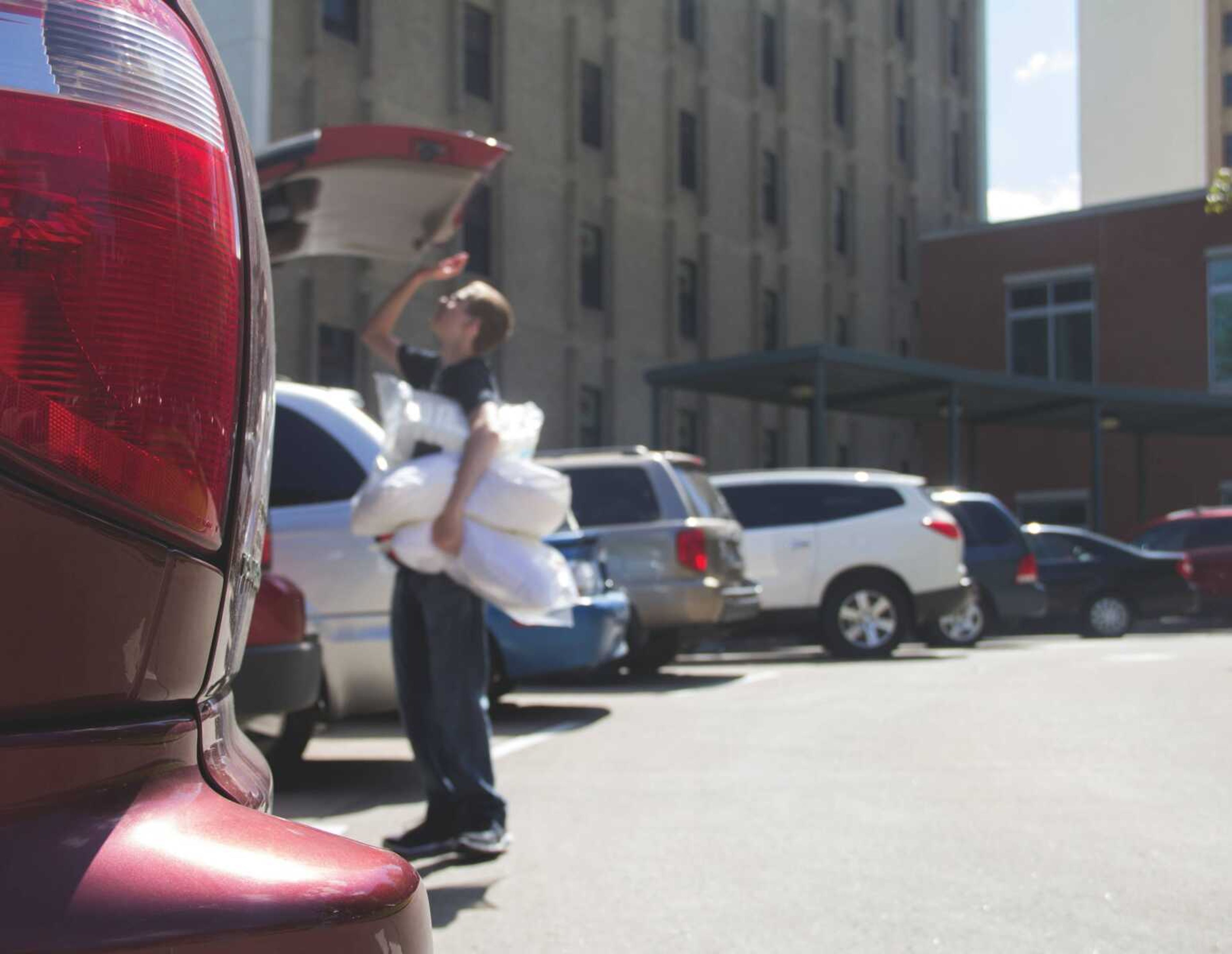Enrollment decreases as future projections increase
While fourth-week spring enrollment numbers at Southeast Missouri State University have decreased relative to 2015, fall enrollment for the 2016-2017 academic year is projected to increase. Last spring's headcount totaled 10,858 students, a difference of 49 students, or half of a percent, to this spring's 10,809...
While fourth-week spring enrollment numbers at Southeast Missouri State University have decreased relative to 2015, fall enrollment for the 2016-2017 academic year is projected to increase.
Last spring's headcount totaled 10,858 students, a difference of 49 students, or half of a percent, to this spring's 10,809.
According to Dr. Debbie Below, vice president for enrollment management and student success and dean of students, spring already was predicted to be down in enrollment. She said most students are continuing -- more than 90 percent of freshmen stay from fall to spring -- but since fall numbers had decreased, it was only natural spring would, too.
"Spring is always a little smaller because you do have some attrition and you have December graduates, and you don't have as many freshmen coming in," Below said.
There were 773 students who graduated in December and only 208 freshmen beginning in January.
"That doesn't make that up, necessarily," Below said.
Although, 208 is above spring 2015's 162. Below noted the 46 student difference is a 28 percent spike.
An upward trend is even more evident when looking forward to fall. Below said fall application submissions have risen 17 percent compared to a year ago, and admitted students have increased by 15 percent. Those reserving a spot for First STEP orientation also is up 24 percent, along with housing deposits by 22 percent.
Below mainly attributed the growth to Southeast's rebranding, but said added technology within the admissions program has something to do with the higher numbers as well. Still, the "Will To Do" campaign has been key to reaching prospective students. She said promoting the brand is as important off campus as it is on campus, and the new strategy helps differentiate Southeast in an ever-growing higher education market.
"Each year through a combination of beginning freshmen and transfer students, through the whole academic year, probably a new group of almost 3,000 people join the university, so you have to tell them what you have to offer, and that's what the 'Will To Do' brand is doing for us," Below said.
Below noted the university's goal is to both maintain and grow size "modestly and steadily," meaning between 1 to 1.5 percent annually. But the focus isn't solely freshmen. She said, more and more, she has seen the need to reach out to non-traditional students.
"There is data that tells us that in the future more jobs are going to require a higher education, Below said. "We know that whether it's students who traditionally wouldn't have thought about going to school or they're already working and now they want to start school or they have some college but they want to come back, those are all markets that we want to be accessible to."
Southeast has a Strategic Enrollment Management (SEM) Committee, which Below, acting chair, said elects members to represent all general areas of enrollment at the university, like undergraduate and graduate, new and transfer and regional campuses. Those sectioned areas of enrollment meet throughout the university's budget review cycle to evaluate previous years' data and formulate future goals based on size, quality and diversity.
"We never hit every goal we set, but by doing quite a bit of goal-setting, that's allowed us, over time, to continue to have this steady enrollment growth as an institution," Below said.
And those goals come back to the "Will To Do" brand. Below highlighted that Southeast aims to dedicate resources to strengthen academic programs so students feel prepared to jump into their career fields.
"I think you have to take the academic program and make it the focal point of what you're proponing as an institution," Below said. "Students are investing a significant amount of their time, energy and financial resources to be here. That program is what will propel them into the future."







